Mapping Grab’s Next Move: A Data-Driven Look at What It Might Acquire Next
A deep dive into Grab’s 12 key acquisitions: what they built, what they broke, and what they quietly reveal about the company’s next strategic targets.
Grab has completed a total of 12 acquisitions since its founding in 2012, evolving from a Malaysia-based ride-hailing startup into Southeast Asia’s leading Super App.
Below, I profile each known acquisition in chronological order, detailing the acquired company’s background, deal particulars, executive commentary, integration into Grab’s platform, and strategic purpose.
I then analyse and rank these deals by their impact on Grab’s business, considering strategic importance, user/revenue growth, synergy with Grab’s core segments, and long-term value creation.
Following that, I discuss the types of deals we can expect Grab to focus on by extrapolating that data.
Table of Contents:
Acquisition Timeline and Profiles
Deals Ranked
Types of Deals Grab Is Likely To Make
Concluding Thoughts
1. Acquisition Timeline and Profiles
Youche (China, 2013) — Ride-Sharing Startup
In 2013, Grab quietly acquired Chinese ride-sharing startup Youche to establish its Beijing R&D center. The deal, undisclosed and unpublicised, was an early acqui-hire focused on engineering talent rather than consumer expansion.
The Youche team was integrated into Grab’s tech division, forming a key part of its global engineering base. While the acquisition had little direct impact on users or revenue, it played a strategic role in strengthening Grab’s technical capabilities during its early growth phase.
Kudo (Indonesia, 2017) — O2O Payment & E-Commerce Platform
Kudo, founded in 2014, was an Indonesian O2O e-commerce and payments platform enabling unbanked users to shop online via 400,000+ agents in 500+ towns. Agents facilitated cash-based purchases, helping expand e-commerce to rural Indonesia.
Grab acquired Kudo on April 3, 2017, in a deal reportedly worth $80–$100M. It was Grab’s first major acquisition and the first step of its $700M “Grab 4 Indonesia” initiative. Grab integrated Kudo into GrabPay, using its agent network to deepen reach into underserved areas and offer top-ups and offline services.
Executives from both companies cited strong synergies, with Grab aiming to drive digital payments and offer services like micro-loans and insurance to the unbanked. The move strengthened Grab’s fintech capabilities and its competitive position against Gojek in Indonesia.
Uber SEA (2018) — Ride-Hailing & Food Delivery Competitor
In March 2018, Grab acquired Uber’s Southeast Asia operations, including ride-hailing and UberEats, through an equity deal. In exchange, Uber received a 27.5 percent stake in Grab, and CEO Dara Khosrowshahi joined Grab’s board. The deal, covering eight countries, was considered the largest of its kind in the region.
This move removed Grab’s biggest competitor, giving it dominant market share and accelerating the launch of GrabFood by leveraging UberEats' existing network. Uber’s drivers, users, and staff were migrated into Grab’s ecosystem.
The acquisition also advanced Grab’s super-app strategy, expanding its presence in food delivery, digital payments, and financial services. Despite some regulatory scrutiny, this is arguably Grab’s most impactful deal, providing cost efficiency, scale, and a stronger foundation for long-term growth.
Bento (Singapore, 2020) — Digital Wealth & Robo-Advisory Startup
Bento was a Singapore-based robo-advisory startup founded in 2016 that provided B2B digital wealth management tools for financial institutions. On February 4, 2020, Grab acquired Bento to support its push into financial services. Terms were undisclosed.
The acquisition marked Grab’s entry into wealth management. Bento was rebranded as GrabInvest and integrated into the Grab app, offering micro-investment and savings products to users, including drivers and merchants. Bento founder Chandrima Das became Head of Wealth at Grab.
Strategically, the deal expanded Grab’s fintech capabilities beyond payments, lending, and insurance. It helped Grab prepare for its digital bank ambitions and aimed to increase user engagement through investment offerings. While short-term impact was modest, the acquisition positioned Grab to become a full-service financial platform.
HungryGoWhere (Singapore, 2021) — Food Discovery & Reviews Portal
HungryGoWhere was a well-known Singapore food review and discovery site launched in 2006. It was shut down by Singtel in 2021 after 15 years of operation. Grab quietly acquired the brand and domain later that year and officially relaunched it on June 15, 2022, as a food content platform. Deal terms were not disclosed.
Grab’s version of HungryGoWhere focuses on editorial content, such as food guides and chef interviews, rather than user reviews or reservations. It operates as a standalone site but is integrated into Grab’s ecosystem through cross-promotion in the app and use of GrabFood data to inform content.
Strategically, the move supports Grab’s food delivery business by driving user engagement, building brand loyalty, and offering merchant partners a media platform. Though it does not directly generate significant revenue, HungryGoWhere enhances Grab’s super-app positioning by turning food discovery into a pathway for transactions.
OVO (Indonesia, 2021) — Digital Payments (E-Wallet) Platform
OVO is one of Indonesia’s largest digital wallets, launched in 2017 by Lippo Group and widely used for retail, ride-hailing, and online payments. Grab initially partnered with OVO and held a minority stake before acquiring majority control in October 2021. Grab bought out Lippo and Tokopedia’s stakes, reportedly valuing OVO at around $2 billion. Terms were not officially disclosed.
The move gave Grab around 90 percent ownership of OVO, aligning with regulatory shifts as Tokopedia was merging with Gojek and needed to exit OVO due to its GoPay ownership. OVO continued operating under its own brand but became Grab’s fintech arm in Indonesia.
Strategically, the deal gave Grab full control over payment infrastructure in its largest market. OVO’s integration strengthens Grab’s closed-loop ecosystem, deepens user engagement through loyalty rewards, and enables cross-selling of loans, insurance, and investments. It also supports Grab’s broader digital banking ambitions. The acquisition eliminated shared ownership with a competitor and positioned Grab to lead in Indonesia’s fast-growing digital finance space.
Jaya Grocer (Malaysia, 2022) — Supermarket Chain
Jaya Grocer is a leading mass-premium supermarket chain in Malaysia with over 40 stores, known for quality groceries and fresh produce. In December 2021, Grab announced its acquisition of a majority stake. While terms were undisclosed, estimates placed the deal value between $350M-430M, making it one of Grab’s largest acquisitions.
Upon acquisition, Grab integrated Jaya Grocer into its ecosystem by onboarding stores to GrabMart, enabling online grocery delivery. GrabPay was rolled out in all physical outlets, and GrabRewards were integrated at checkout. Jaya’s supply chain also began supporting GrabSupermarket operations.
Strategically, the acquisition gave Grab a direct foothold in offline grocery retail, enhancing margins and fulfilment for GrabMart. It allowed Grab to serve the high-frequency grocery segment, grow wallet share, and diversify beyond food and mobility. The synergy between Grab’s tech and Jaya’s retail operations accelerated online grocery adoption in Malaysia and strengthened Grab’s position as a daily essential super-app.
Move It (Philippines, 2022) — Motorcycle Taxi Booking App
Move It is a leading motorcycle taxi booking app in the Philippines, one of only three players authorised to operate under the government’s motorcycle taxi pilot program. It was founded to offer safe, reliable transport alternatives in Metro Manila and beyond.
Grab acquired a controlling stake in Move It in August 2022, returning to the motorcycle taxi segment after being excluded from the pilot program. The terms were not disclosed. Rather than operating under the Grab brand, Move It retained its own identity while gaining access to Grab’s technology, driver training systems, and customer base.
Strategically, this acquisition allowed Grab to re-enter the Philippines' motorcycle taxi market through a compliant and recognised channel. It expanded Grab’s mobility offerings in a key market and signalled a commitment to affordable transport. The deal also increased competition with local players like Angkas and JoyRide, and strengthened Grab’s regulatory alignment in the Philippines.
Chope (Singapore, 2024) — Restaurant Reservation & Dining Platform
Chope is a leading restaurant reservation platform in Southeast Asia, founded in Singapore in 2011. By 2024, it had over 13,000 restaurants across Singapore, Indonesia, Thailand, and China. Grab acquired Chope’s Southeast Asia operations in July 2024, excluding China and Hong Kong. Deal terms were not disclosed.
The acquisition allows Grab to integrate Chope’s reservation system into its super-app, expanding beyond food delivery into dine-in services. It complements HungryGoWhere’s content and enables users to discover, book, dine, and pay all within Grab. Grab also plans to incorporate Chope’s merchant tools into its existing suite, helping restaurants manage both delivery and in-person dining.
Strategically, this move strengthens Grab’s F&B ecosystem and gives it a unique edge over regional competitors that lack reservation capabilities. It deepens engagement with both users and merchants, supports monetisation through advertising and promotions, and reinforces Grab’s position as the go-to platform for dining in Southeast Asia.
Nham24 (Cambodia, 2024) — Food Delivery & E-Commerce Platform
Nham24 is Cambodia’s largest food delivery and e-commerce platform, offering services such as food, groceries, express deliveries, and digital payments. Founded in 2016, it grew to dominate the Cambodian market with thousands of merchant partners and a ~1M strong user base.
Grab acquired Nham24 in December 2024. This marked Grab’s first major move into Cambodia’s digital economy. Nham24 continued operating under its own brand post-acquisition, while gaining access to Grab’s technology and operational expertise.
Strategically, the deal gave Grab an early leadership position in Cambodia and expanded its geographic footprint in Southeast Asia. It enabled Grab to tap into a fast-growing but under-penetrated digital market while leveraging Nham24’s existing infrastructure. The partnership also laid the groundwork for integrating GrabPay, GrabRewards, and potential FinTech offerings into Nham24’s ecosystem.
Everrise (Malaysia, 2025) — Supermarket Chain
Everrise is a leading premium supermarket chain in East Malaysia, with 19 stores across Sarawak and Sabah. Founded in 1993, it has a strong local following and reputation for fresh produce and imported goods. On March 4, 2025, Grab acquired 100% of Everrise from Navis Capital and the founding family. Deal terms were not disclosed but were likely smaller than the Jaya Grocer transaction.
This acquisition gives Grab a grocery presence in East Malaysia, complementing Jaya Grocer in the west. Everrise stores are expected to be integrated into GrabMart for on-demand delivery, while GrabPay and GrabRewards will be rolled out in-store. Grab also plans to digitise Everrise’s operations and loyalty program, improve supply chain efficiency, and explore hybrid retail models suited to East Malaysia’s geography.
Strategically, the acquisition ensures national grocery coverage for Grab in Malaysia and prevents rivals from entering through Everrise. While smaller in scale, it adds strong regional merchandising expertise and a loyal customer base. The deal supports Grab’s goal of becoming a leading grocery player and deepens user engagement across both physical and digital touch points.
You can read my personal thoughts on this acquisition here.
Validus Singapore (Singapore, 2025) — SME Lender
Validus is a Singapore-based SME-focused fintech platform founded in 2015, offering digital financing, payments, and business solutions. It is a licensed Major Payment Institution under MAS and was one of the fastest-growing players in SME lending and financial services.
In April 2025, GXS Bank (a Grab-Singtel digital bank joint venture) announced it would acquire the Singapore operations of Validus. The deal, pending regulatory approval, did not cover Validus’ regional entities outside Singapore. Terms were not publicly disclosed.
The acquisition provides GXS with an immediate SME customer base, credit infrastructure, and experienced fintech talent. Validus’ loan book and merchant ecosystem help accelerate GXS’s plans to expand beyond consumer banking into SME financial services. The move aligns with Grab’s broader fintech ambitions, giving GXS a stronger foundation to serve underserved businesses in Singapore and enhance cross-selling opportunities with Grab’s platform.
You can read my personal thoughts on this acquisition here.
Summary:
Youche (China, 2013) — Ride-Sharing Startup
Kudo (Indonesia, 2017) — O2O Payment & E-Commerce Platform
Uber SEA (2018) — Ride-Hailing & Food Delivery Competitor
Bento (Singapore, 2020) — Digital Wealth & Robo-Advisory Startup
HungryGoWhere (Singapore, 2021) — Food Discovery & Reviews Portal
OVO (Indonesia, 2021) — Digital Payments (E-Wallet) Platform
Jaya Grocer (Malaysia, 2022) — Supermarket Chain
Move It (Philippines, 2022) — Motorcycle Taxi Booking App
Chope (Singapore, 2024) — Restaurant Reservation & Dining Platform
Nham24 (Cambodia, 2024) — Food Delivery & E-Commerce Platform
Everrise (Malaysia, 2025) — Supermarket Chain
Validus Singapore (Singapore, 2025) — SME Lender
2. Deals Ranked
In this segment, I will be ranking all 12 deals that Grab has closed during its history by considering these factors:
Strategic Importance
User/Revenue Growth
Synergy with Grab’s Core Segments
Long-Term Value Creation
Bento
The wealth tech startup Bento was acquired by Grab in Feb 2020 to bring retail wealth solutions to consumers across Southeast Asia.
It was rebranded as GrabInvest with products launched on the Grab app months later. However, 3 years later in September 2023, Grab announced that GrabInvest would be shuttered, along with its investment products AutoInvest and Earn+ as a result of an extensive review that concluded the business would not be commercially viable.
Verdict: It was a cheap option bet that Grab made on expanding its breadth in the FinTech space. Ultimately, it failed, making this one of Grab’s worst investments.
Move It
Move It is one of the leading motorcycle taxi booking apps in the Philippines. In fact, one of only three authorised by the government. It was acquired by Grab in 2022.
It re-launched with Grab’s tech stack, adding mobility SKU. The competitive landscape is tough with Move It being the smallest of the 3 authorised players.
Additionally, the government recently reduced the rider-cap to 6.8k from the initial 14k that Move It was operating at.
Verdict: This fills a product gap for Grab but the business remains hostage to policy swings by the government.
HungryGoWhere
HungryGoWhere was a beloved food-media brand in Singapore that went offline in 2021 before being bought and relaunched by Grab in 2022. It focuses on reviews and recommendations, highlighting up-and-coming personalities and origins of popular foods.
Since acquisition, it was left as a stand-alone website without integration to Grab’s app. However, during April’s product day, Grab announced “Dine out Discovery” a feature that allows consumers to filter through restaurants and cafes using selected cuisines, pricing, ratings etc…
It utilised a combination of “Chope” and “HungryGoWhere”, both acquisitions that were made in the past 3 years. Essentially, this is an advertising play where restaurants can promote their stores directly on the Grab app, driving high margin ad revenue for the business.
Verdict: I believe this was a mediocre acquisition at the start but with the addition of “Dine out Discovery” has the potential to be great.
Youche
This was an acqui-hire to seed a Beijing engineering hub to support Grab’s capabilities.
This came at a time when top ML talent was scarce in SEA. It was a great deal at the time but in terms of long-term impact is relatively limited, with the engineering capabilities largely replaced by Singapore hubs today.
Verdict: This was a great acquisition at the time that was key for a young Grab but with limited longer-term potential.
Everrise
Everrise is the leading supermarket chain in East Malaysia, and the purpose of this acquisition was to mirror Jaya Grocer’s playbook.
This is essentially the Amazon-Whole Foods playbook where Grab is acquiring supermarket retailers to act as fulfilment centers for GrabMart, leveraging the large supplier network to expand its product line at lower costs (leading to improved unit economics). I wrote about my thoughts on this acquisition in March.
Verdict: This is a great acquisition on the logistics and economies of scale end, but a relatively small one with minimal impact on the overall group.
Chope
Chope was the leading dining reservation platform in Southeast Asia with 13,000 eateries on the platform at the point of acquisition.
Generally, the dining reservation market is a highly fragmented market, with relatively weak margins. However, the synergy of Chope into Grab allows them to own the full dining journey:
Discovery (HungryGoWhere)
Reservation (Chope)
Delivery (GrabFood)
Payments (GrabPay)
Verdict: I think this is an acquisition with high synergy potential but will not have as large of an impact as others on this list.
Nham24
Nham24 gives Grab instant leadership in Cambodia with ~1M users. While Cambodia’s TAM is relatively small (17M people) compared to the likes of Indonesia (281M people), it is the fastest growing country in ASEAN with huge potential.
Verdict: This was a low-hanging fruit and a smart acquisition by Grab.
Kudo
Kudo was rumoured to have been acquired by Grab for $80-$100M in 2017 and was just its 2nd ever acquisition.
Kudo has 500,000 agents in 500 cities and towns throughout Indonesia that sell phone credits, bill-pay, loan top-ups — feeding GFin’s cross-selling engine.
This was crucial in solving the cash-to-digital conversion which remains a moat today vs GoTo in tier 2/3 cities.
Verdict: This continues to power agent-led deposits and SME services; it is undoubtedly one of Grab’s shrewdest acquisitions.
Jaya Grocer
Jaya Grocer has been a huge win for Grab with its rapid digitisation of all its outlets and bringing them all onto the GrabMart platform. Prior to the acquisition, GrabMart had access to just 12 Jaya Grocer outlets, that numbers is now 41.
Jaya Grocer’s online sales as a proportion of total sales grew 10 times while the order fill rate improved by 20% across that period.
GrabPay was also rolled out across all Jaya Grocer, along with the Grab Unlimited membership system that was integrated with Jaya Grocer’s loyalty program.
Verdict: Grocery is a high-frequency, high-basket business that is critical to wallet share. The data that is collected also improves demand forecasting for last-mile. This was in my opinion, one of Grab’s most underrated acquisitions.
Validus Singapore
The Validus Singapore acquisition is a shrewd, calculated one, giving GXS bank instant access to a SME loan book and MAS-licensed credit infrastructure. This allows GXS Bank to cross-market into the Grab merchant base with hundreds of thousands of small eateries and drivers.
SME products are also generally higher yielding, which enhances the path towards profitability for the GFin segment.
Verdict: I think this was a great acquisition and potentially a pre-cursor to a full acquisition of Validus’ broader Southeast Asian operations.
OVO
Grab’s acquisition of OVO helped put them on the map in Indonesia’s e-payment race with over 110M wallets and 38% share.
OVO owns the checkout rails in Indonesia, Grab’s largest market, and helps close the data loop for credit scoring, rewards, PayLater etc…
The acquisition of OVO (90% stake), also removed Tokopedia (now GoTo) from the cap table, severing overlap with its arch-rival GoPay.
Verdict: This was a truly important acquisition for Grab and one that could be the potential anchor for an Indonesian digital bank license. (Grab currently owns a stake in Indonesia’s DigiBank, Superbank alongisde Singtel)
Uber (SEA Operations)
The elephant in the room. The defeat of its main rival in 2018, instead turning into allies through Uber’s 27.5% equity stake in the business, cemented an alliance and the clearing of Grab’s path towards today’s dominance.
This acquisition instantly doubled driver supply in some markets and accelerated the GrabFood launch via UberEats assets. It led to a massive savings in CAPEX & incentive burn, and cost per rides improved over 20% within a year.
Verdict: This was one of the largest mergers/acquisitions in Southeast Asian history and one that’s dividends are still compounding across every Grab vertical today. We have a winner.
3. Types of Deals Grab Is Likely To Make
When we look at the pattern of acquisitions so far, Grab has repeatedly bought three things: scale, rails, frequency.
Scale:
Removed rivals such as Uber SEA, Move It, or gave themselves instant country leadership through Nham24.
Rails:
Proprietary payments & credit pipes through OVO, Validus or talent to build them, Youche.
Frequency:
Locked in high-repeat transactions/usage categories such as groceries (Jaya Grocer, Everrise), and dining discovery/reservations (HungryGoWhere, Chope)
These deals typically share 4 common filters:
High TAM adjacencies to ride-hailing and food delivery.
Offline assets that digitise well within the SuperApp.
Regulatory moats that are hard to replicate (e-money licenses, supermarket quotas, motorcycle-taxi permits)
Clear pay-off windows: either immediate cost removal (Uber SEA) or cross-selling revenue within 24-36 months (OVO, Jaya Grocer)
I believe these patterns, plus the recent $1.5B convertible bond raise gives us good clues about what the next acquisitions are likely to be.
Potential Targets
National Payment Rails:
A closed-loop wallet is the glue for Grab’s rewards, PayLater, lending and underwriting engines. With Indonesia and Malaysia largely covered, Vietnam is the obvious gap for Grab.
MoMo
Vietnam’s largest e-wallet, 60M+ users, >$2B valuation after 2021 round.
MoMo will give GrabPay a path into a 100M population overnight, give Grab first-party data before Sea’s ShopeePay can lock it up. Vietnamese riders would be able to pay with MoMo inside Grab.
VNPay
QR + SoftPOS network that serves 250K+ merchants in Vietnam.
VNPay would allow Grab to control the checkout hardware. Neighbourhood Cafe’s would have access to settle through Grab rails, making cash-back, points systems, and PayLater seamless.
SME Credit & Acquiring Engines:
Validus Singapore covers mid-market SMEs; but Grab still lacks reach and payments data rails for micro merchants.
Funding Societies
Leading SME digital financing platform.
This would give Grab access to a proven small-business lending machine. Small mom-and-pop restaurants under Grab’s network (i.e. GrabFood), would be able to tap on instant working capital loans inside the merchant app.
Xendit
Known as the Stripe of Southeast Asia. Already processes over 500M transactions and over $45B USD per year.
This would give Grab access to Stripe-like tools to offer online sellers. Web-store owners could accept cards, e-wallets, and BNPL through a “Powered by Grab” checkout and settle funds into their Grab wallet the same day.
Modern Grocery Footprints:
This is clearly in the Grab playbook, as seen from Jaya Grocer and Everrise. Grocery orders are high frequency and fixes last-mile utilisation for Grab.
Bach Hoa Xanh (VN)
As of June 2025, has a total of 2180 retail grocery stores in Vietnam and is growing extremely quickly. Since the beginning of the year, it has added 410 stores.
This would give GrabMart fresh-food density in Vietnam and expand its network.
AllDay Supermarket (PH)
Supermarket chain in the Philippines with over 100 stores.
Would fill Grab’s grocery gap in the country and allow it to expand quickly.
Cold-chain and Hyper-local Logistics:
Frozen and fresh food require specialist infrastructure. Owning it would improve GrabMart’s margins and de-risks perishables.
Logistics are the key to winning and is one of the few moats in the business.
Paxel (ID)
Paxel is a same-day cold-chain business with half of its volume coming from frozen food. Notably, over 15% of Indonesia’s GDP is made up of cold-chain.
This would complement GrabExpress and GrabMart and lower grocery spoilage cost while boosting its logistics and cold-chain network.
Ninja Van
Leading logistics provider in Southeast Asia. It engages in last-mile logistics and package delivery.
Grab already took a minor strategic stake in the business in 2019. It would be a logical move to acquire the whole business to boost its logistics network.
Digital Health and Micro-Insurance:
With Grab’s recent entry into motor insurance, I believe it is just step one in a grand plan to enter the insurance industry, which I mentioned in my previous article could be the 4th pillar to the business.
Insurance is a great business and one that would lift the overall group’s margins.
WhiteCoat
Leading telemedicine provider in Southeast Asia
A buyout would allow Grab to fold tele-consult and pharmacy delivery directly into GrabHealth.
Igloo
Leading Southeast Asian Insurtech business with over 900M+ policies facilitated and offices in 8 countries across Southeast Asia.
Grab would gain access to ready-built insurance products such as phone protection, travel cover, weather-index crop insurance that slots directly into the app.
Conclusion:
Grab’s acquisition playbook is generally quite consistent, buying scale to eliminate competitors or jumpstart new markets, securing rails that lock in payments/credit flows, and capturing frequency through everyday essentials such as groceries and dining.
Grab has over $7B on its balance sheet in cash and it has to utilise it quick. Each of these acquisitions would reinforce its SuperApp moat, driver higher app engagement, and unlock new high-margin revenue streams.




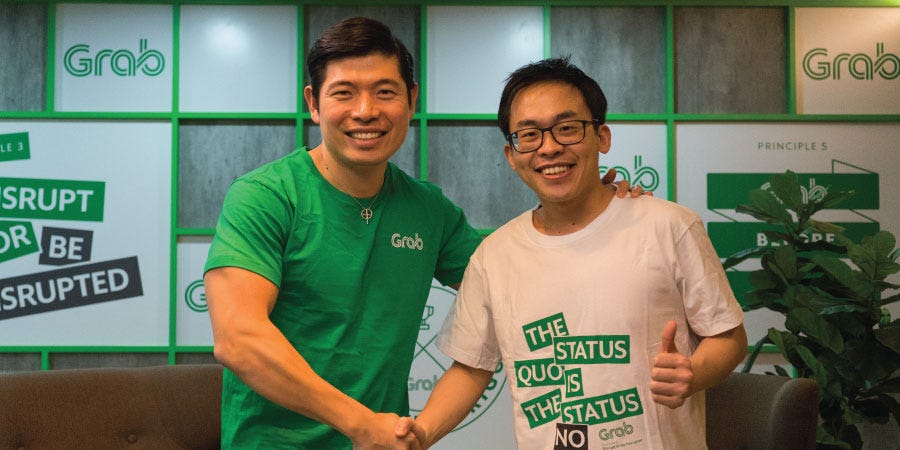
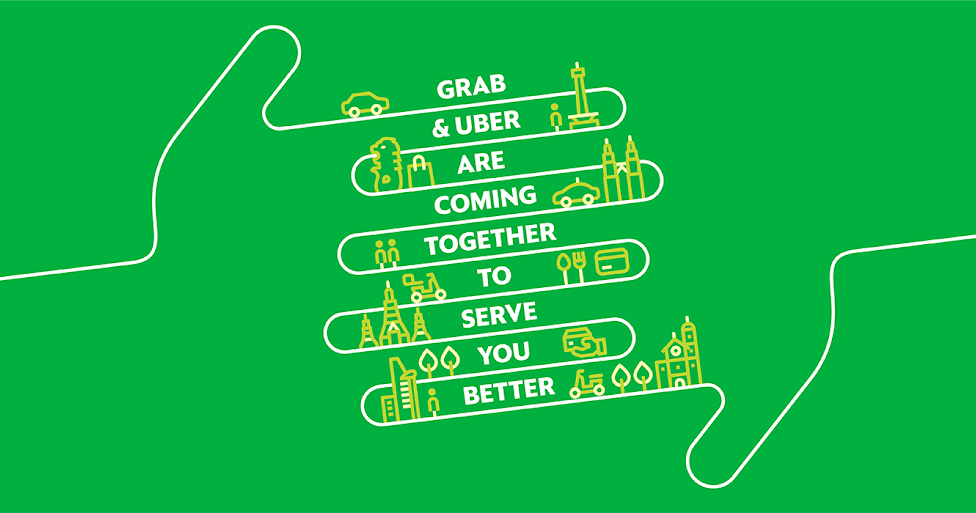
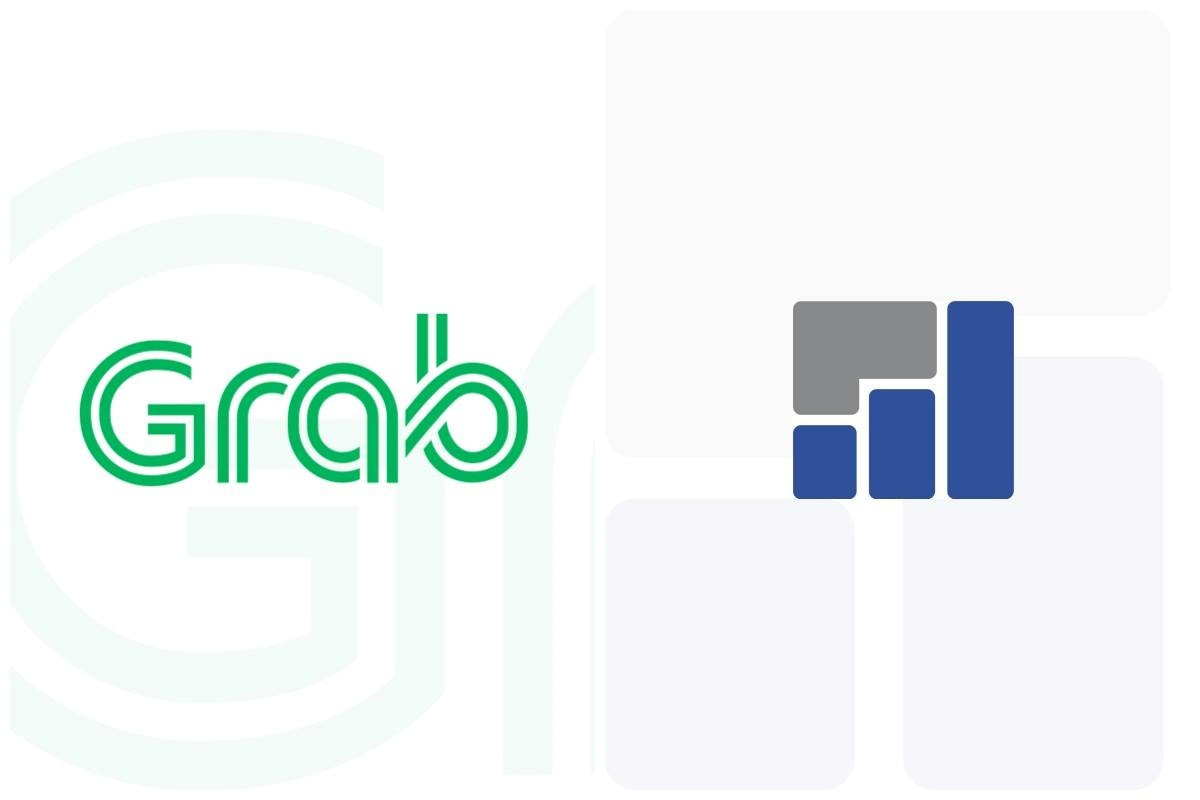
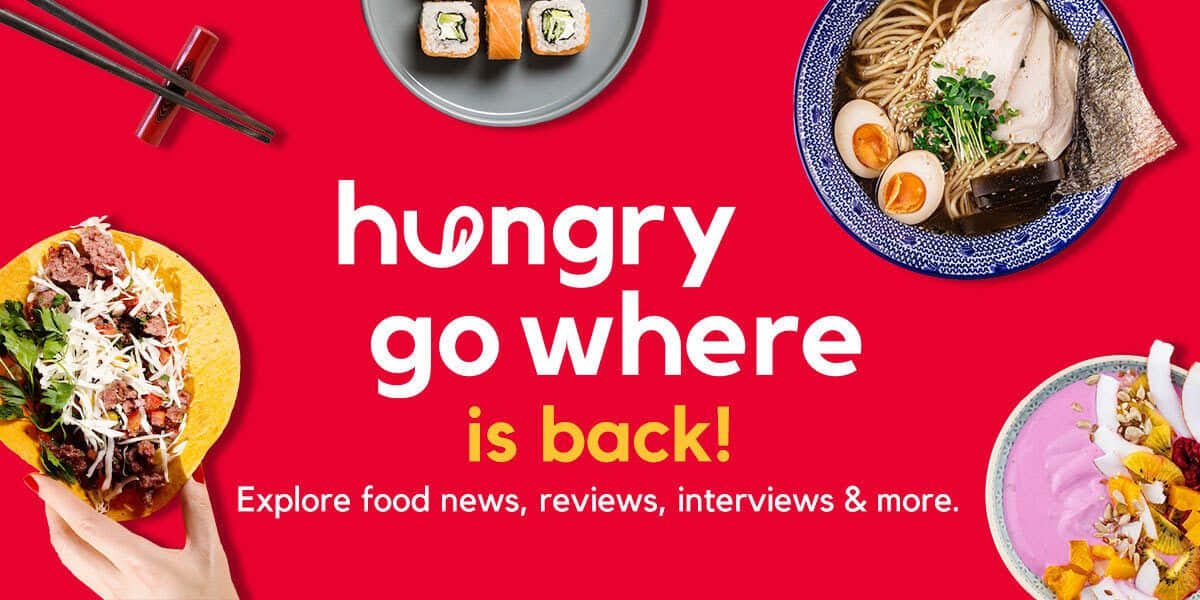


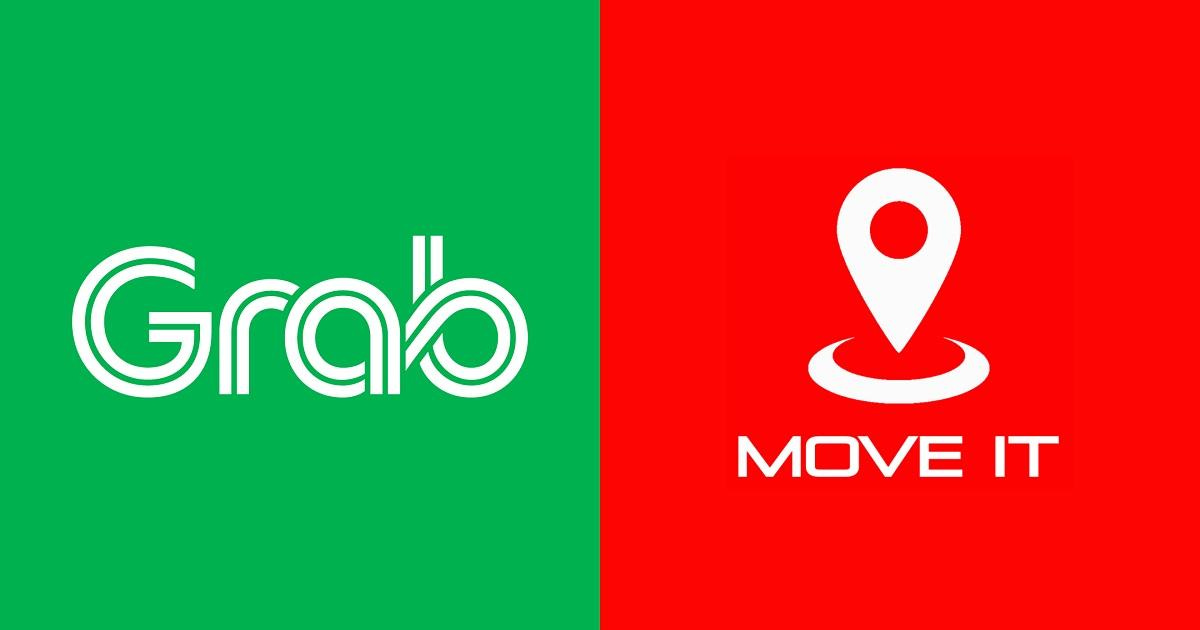
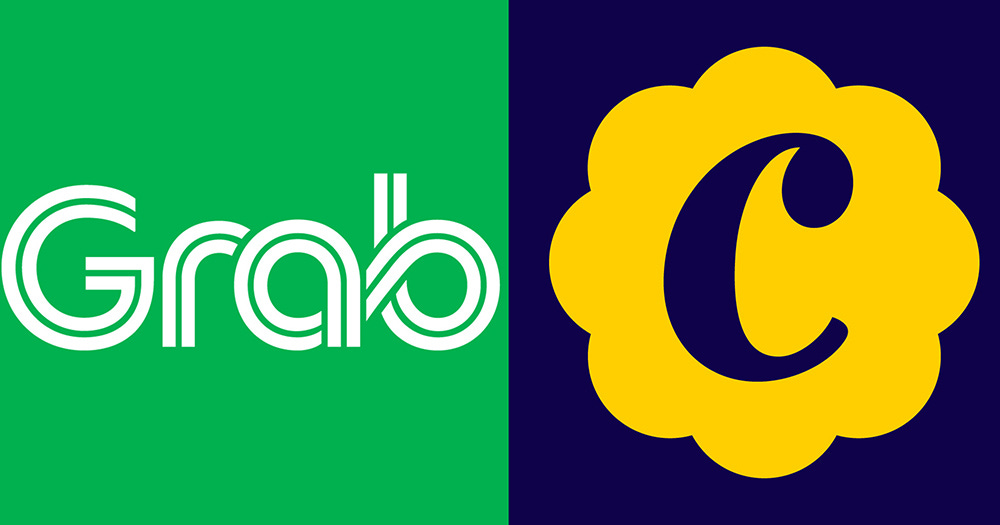

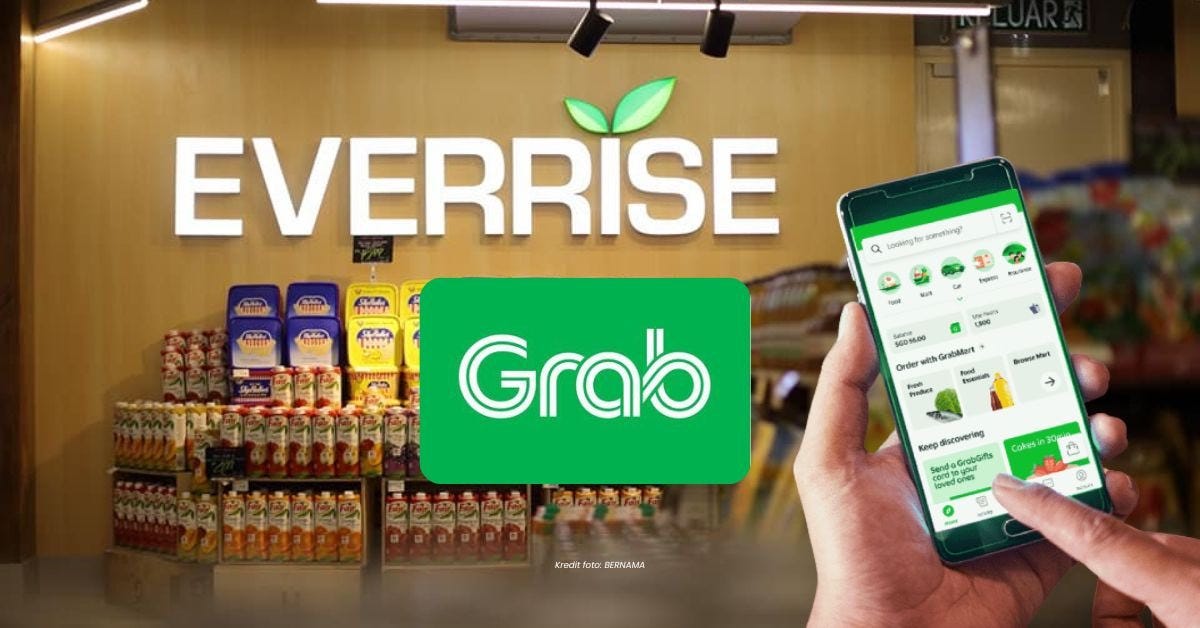
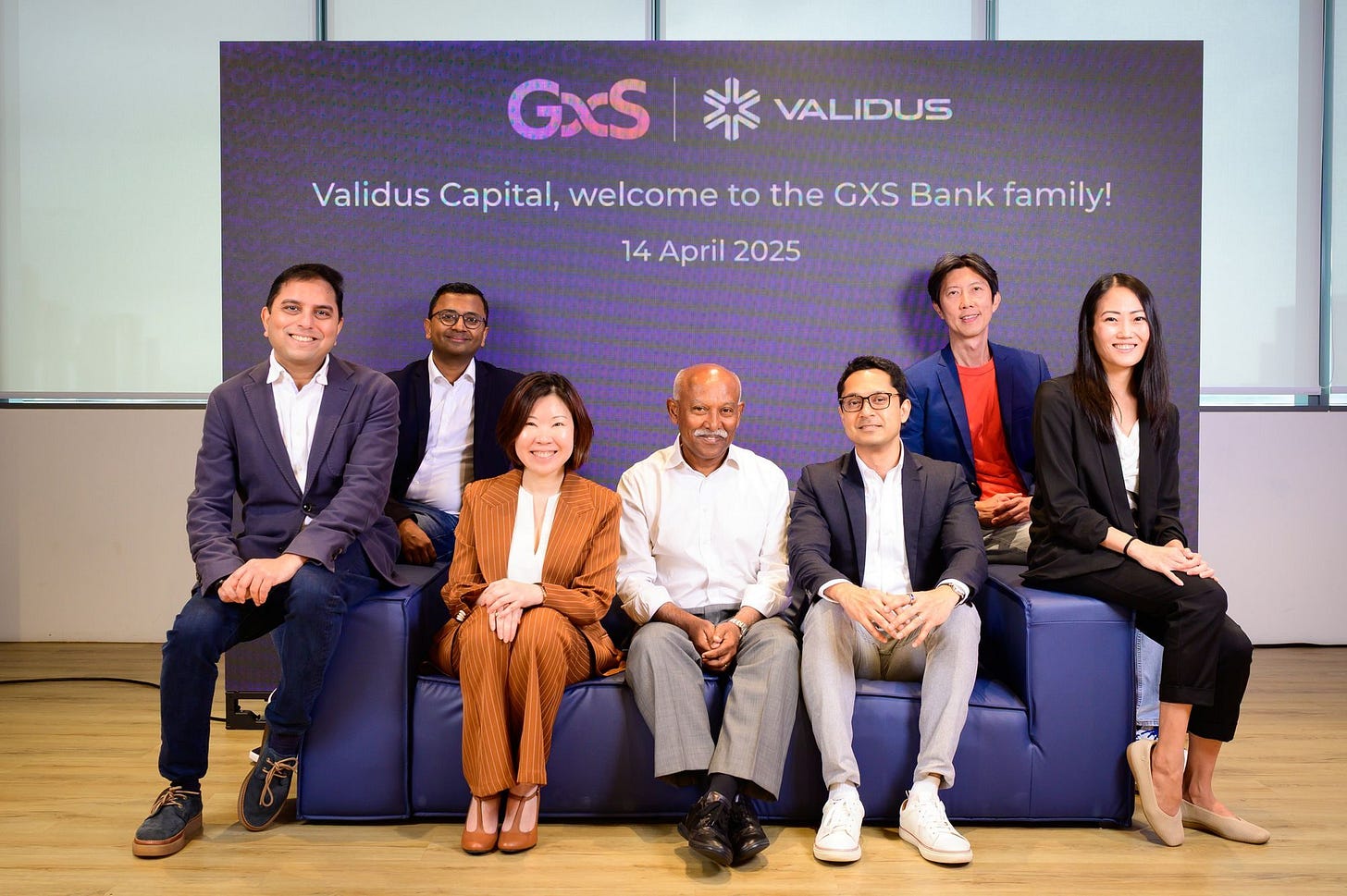
Thank you for this!